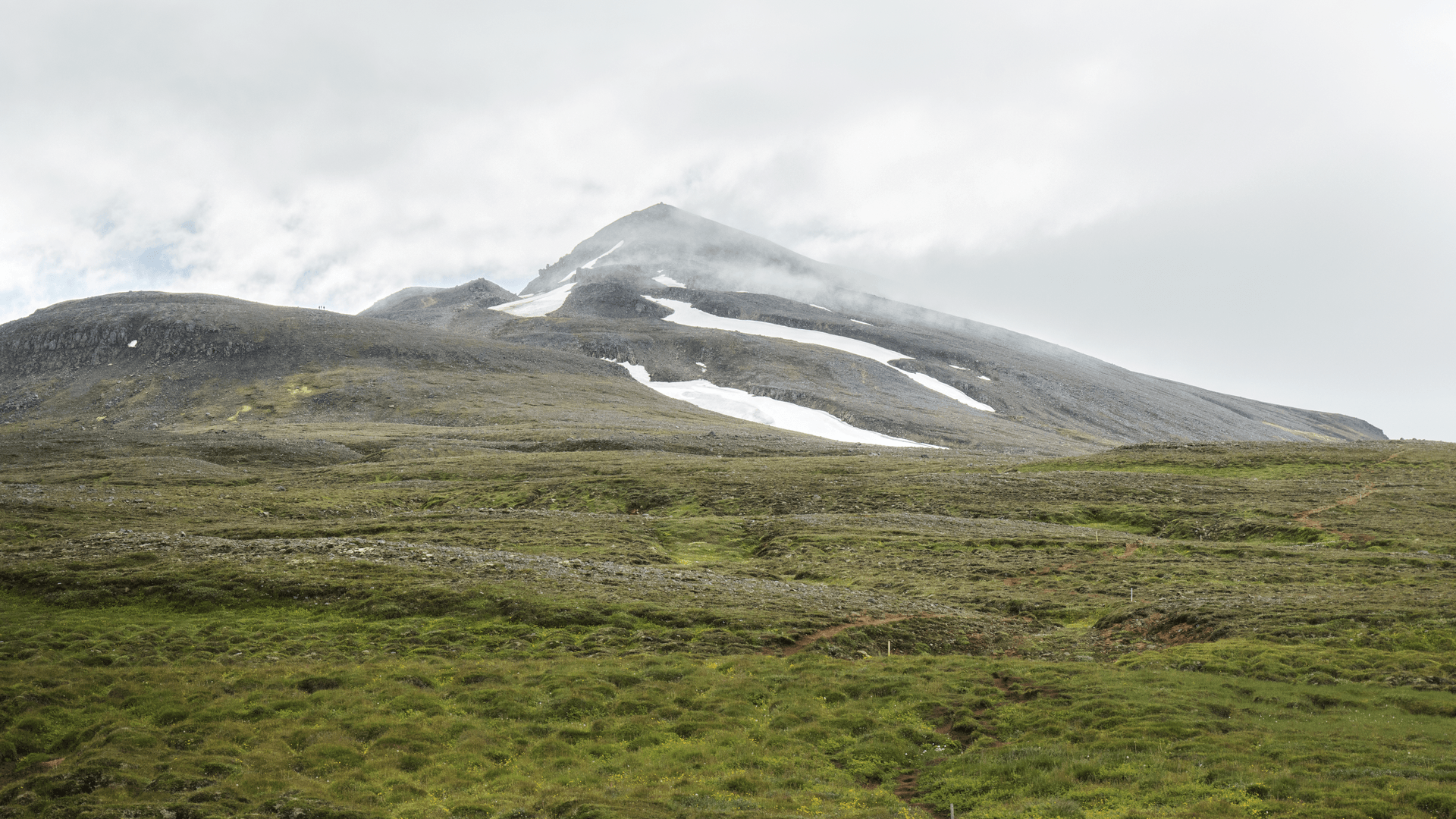You are here
Súlur is a 1,213-meter (3,753-foot) mountain with two rhyolite peaks that rise high over the suburbs of Akureyri in the northeastern region of Iceland. It is part of the Glerárdalur region, which was carved out by glaciers and has some of the highest mountains in the north of Iceland. These mountains are covered by snow throughout the year, and trekkers should be aware that the weather conditions can change suddenly to storms and blizzards. A hike up Súlur offers a rewarding 800-meter (2,625-foot), 11-kilometer (7-mile) there-and-back climb with incredible views over the city and out to Eyjafjörður, the longest fjord in Iceland. Various trail maps are available for purchase in town at the Hof tourist building.
Start from the parking lot at the end of a long dirt road in the Glerárdalur Valley. There is an information kiosk here and several signs designating various trailheads. Look for the one that says "Súlur – 5km" and head up the hill, where on clear days you will be able to see the summit.
The path is well worn and marked by yellow wooden stakes. Use the wooden steps to climb over the fence and continue up the trail. There are several streams to cross with light runoff from snow melt. Continue up the mountain and past a large cairn. Next, come to a long supported wooden walkway that is two planks wide and will help you over some rather wet areas. In the late summer, the fields that surround you will have many wildflowers in bloom.
Soon the rate of your ascent will increase, and the grass will begin to disappear. The earth around you will be dirt and large rocks. Before you know it, you’ll reach snow. At this point, the tracks from other hikers may diverge. While there are still yellow stakes designating the official trail, you may want to take a route that avoids the snow. (The diverging routes all lead to the top.) You’ll make a slight descent before making the final climb up another 150 meters (490 feet) in just 1 kilometer (0.6 mile). The first peak is at 1,112 meters (3,650 feet) and is called Ytrisúla. It is marked by a large cairn, and there is a logbook here with a few items in a box. You can choose to make your descent or continue another 1.6 kilometers (1 mile) to the second peak, Syðrisúla, which is at 1,213 meters (3,979 feet) and designated with another large cairn.
While the most common descent from Ytrisúla is back down the same path, some trekkers may decide to try an alternative 7-kilometer (4.3-mile) path down to the Hamrar Campsite at 170 meters (560 feet). The route may be difficult to find because it does not have clear signs of travel. It diverges down the northeast side of Súlur and is marked by widely spaced tall red-orange stakes.
The landscape is covered with thick moss and can become very wet. However, it leads across beautiful stream beds and offers a different perspective of the area looking over the town of Eyjafjarðarsveit. The Hamrar Campsite is several kilometers away from the original parking area, and a return to the starting point would involve an extended walk on a cycling path back to the edges of Akureyri and up the dirt road.
Glerárdalur is derived from the Icelandic word "Glerá," which means "glass river." While there are many theories as to what the "glass" refers to, it is most likely attributed to the rhyolite found in and around the river that appears to shine in the light. The entire Glerá valley stretches 16 kilometers (10 miles) and has a number of walking and climbing routes throughout the region, including mountains such as Glerárdalshnjúkur (1,328 meters), Tröllafjall (1,471 meters), and Kerling (1,538 meters), the highest mountain in northern Iceland. Most of the mountains here were formed by layers of lava five to 10 million years ago. Fossils as large as 25 centimeters (10 inches) in diameter have been found throughout the valley.
Environmental factors such as groundwater springs, year-round snow, and high mountains enable a rich diversity of alpine plants with more than 87 species having been found. More than third are of the same family Saxifrage (Saxifragaceae). Along your trek you are likely to see pygmy buttercup (Ranunculus pygmaeus) and icecup (Ranunculus glacialis).
At the bottom of the valley there is a mountain cabin called Lambi, which was built in 2014. It is owned by the touring company of Akureyri and can accommodate up to 16 people. There is a kerosene-operated stove for cooking and heating, and drinking water can be obtained from a small stream about 100 meters south of the hut.
Logistics + Planning
Current Weather: Powered by Dark Sky
























Comments
Sign In and share them.